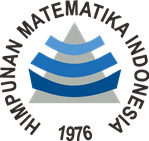The Effectiveness of Visual Number Card Media in Enhancing the Counting Skills of Students with Mild Intellectual Disabilities
DOI:
https://doi.org/10.24090/ijrme.v3i1.13502Keywords:
visual number card; counting ability; mild intellectual disabilitiesAbstract
This study aimed to examine the extent to which the use of pictured number card media influences the counting ability of students with mild intellectual disabilities at the Special School (Sekolah Khusus/Fauzan SKh) in Serang Regency. the primary research question was whether the use of pictured number card media had a significant effect on the counting skills of students with mild intellectual disabilities at Fauzan Special School. The hypotheses of this study comprised a null hypothesis (Ho), which stated that the media had no effect on the students’ counting skills, and an alternative hypothesis (H1), which posited a significant effect. The study employed a pre-experimental method using a one-group pretest-posttest design. The population consisted of 23 students with special needs, from which a sample of 10 students with mild intellectual disabilities was selected. Data were collected through tests, observations, and documentation. The results, analyzed using the Wilcoxon Matched Pairs test at a significance level of 0.05, yielded ap-value of 0.005. Since this value was less than 0.05, the null hypothesis (Ho) was rejected. These findings indicated that the use of pictured number card media significantly improved the counting skills of students with mild intellectual disabilities.References
Fitriani, F., Irfan, M., & Sunardi, S. (2022). Pengembangan Media Kartu Angka Bergambar Untuk Meningkatkan Kemampuan Mengenal Lambang Bilangan 1-10 Siswa Kelas 1 SDN Nunu. Pinisi Journal Pendidikan Guru Sekolah, 2(1), 140–147.
Gunardi, A., Wijaya, S., & Isnada, I. (2022). Pengaruh Media Kartu Angka Terhadap Kemampuan Berhitung Kelas 1 SDN Cilaku Kecamatan Curug Serang – Banten. Jurnal Pelita Calistung, 3(2), 70–78.
Hastuti, W. D., Astati, S. M., Sudarjo, S., & Fathoni, A. (2023). The Effect of Mathematical Intelligence Stick Media on the Summation Skills of Students with Intellectual Disability. Pegem Journal of Education and Instruction, 13(3), 203–208.
Jimenez, B. A., & Kemmery, M. (2013). (2013). Building the Early Numeracy Skills of Students with Moderate Intellectual Disability. Education and Training in Autism and Developmental Disabilities, 48(4), 479–490. https://doi.org/http://www.jstor.org/stable/24232505No Title
Machdarini, M., & Hidayat, L. (2021). Upaya Meningkatkan Kemampuan Berhitung Pada Anak Tuna Grahita Ringan Dengan Menggunakan Media Kantong Biji Tasbih Pada Siswa Kelas III SLB Negeri Kuala Tungkal. Exponential (Education For Exceptional Children) Jurnal Pendidikan Luar Biasa, 2(1), 23–36.
Malapata, E., & Wijayanigsih, L. (2019). Meningkatkan Kemampuan Berhitung Anak Usia 4-5 Tahun melalui Media Lumbung Hitung. Jurnal Obsesi : Jurnal Pendidikan Anak Usia Dini, 3(1), 283–293.
Minsih, M. (2020). Pendidikan Inklusif Sekolah Dasar: Merangkul Perbedaan dalam Kebersamaan. Muhammadiyah University Press.
Nurfitri, A., Octaverino, M. I. Y., Aisyi, N. S. R., Iskandar, S., & Rosmana, P. S. (2022). Meningkatkan Pengenalan Angka Melalui Media Kartu Angka Terhadap Anak Sekolah Dasar. Alpen: Jurnal Pendidikan Dasar, 6(1), 11–20. https://doi.org/10.24929/alpen.v6i1.112.
Park, J., Bouck, E. C., & Josol, C. K. (2020). Maintenance in Mathematics for Individuals with Intellectual Disability: A Systematic Review of Literature. Research in Developmental Disabilities, 105. https://doi.org/https://doi.org/10.1016/j.ridd.2020.103751
Purnomo, D. D., Shodiq, M., & Samawi, A. (2019). Pengaruh Media Dot CardsTerhadap Kemampuan Berhitung Siswa Tunagrahita Sedang. Jurnal ORTOPEDAGOGIA, 5(1), 1–5. https://doi.org/https://doi.org/10.17977/um031v4i12018p001.
Puspitasari, I., & Noormiyanto, F. (2021). Meningkatkan Kemampuan Berhitung Melalui Media Busy Book Siswa Kelas 2 SDLB-C SLB Sekar Handayani. Jurnal Exponential, 2(1), 212–218.
Rukminingsih, Adnan, G., & Latief, M. A. (2020). Metode Penelitian Pendidikan: Penelitian Kuantitatif, Penelitian Kualitatif, Penelitian Tindakan Kelas. Erhaka Utama.
Sanusi, R., Dianasari, Lenggang, E., Khairiyah, Yulinda, K., & Chairudin, R. (2020). Pengembangan Flashcard Berbasis Karakter Hewan Untuk Meningkatkan Kemampuan Mengenal Huruf Anak Tunagrahita Ringan. JPE (Jurnal Pendidikan Edutama), 7(2), 37–45.
Saunders, A. F., Browder, D. M., & Root, J. R. (2016). Teaching Mathematics and Science to Students with Intellectual Disability. In Handbook of Research-Based Practices for Educating Students with Intellectual Disability (1st ed., p. 22). Taylor & Francis Group.
Trimawartinah. (2020). Bahan Ajar Statistik Non Parametrik. Uhamka. http://repository.uhamka.ac.id/id/eprint/3880/1/Bahan Ajar Statistik Non Parametrik FINAL.pdf
Wijayanti, D. S., Hastuti, W. D., & Kristiawan, U. (2022). The Effect of the Numbers Lotto Media on the Ability of Simple Arithmetic in the Children with Intellectual Disability. 2022 2nd International Conference on Information Technology and Education (ICIT&E). https://doi.org/https://doi.org/10.1109/ICITE54466.2022.9759874
Downloads
Published
How to Cite
Issue
Section
License
Copyright (c) 2025 Asnahul Maimanah, Enung Nugraha, Wida Rachmiati

This work is licensed under a Creative Commons Attribution-ShareAlike 4.0 International License.
Authors who publish with this journal agree to the following terms:
Authors retain copyright and grant the journal right of first publication with the work simultaneously licensed under a Creative CommonsAttribution-ShareAlike License that allows others to share the work with an acknowledgment of the work's authorship and initial publication in this journal.
Authors are able to enter into separate, additional contractual arrangements for the non-exclusive distribution of the journal's published version of the work (e.g., post it to an institutional repository or publish it in a book), with an acknowledgment of its initial publication in this journal.
Authors are permitted and encouraged to post their work online (e.g., in institutional repositories or on their website) prior to and during the submission process, as it can lead to productive exchanges, as well as earlier and greater citation of published work (See The Effect of Open Access).












